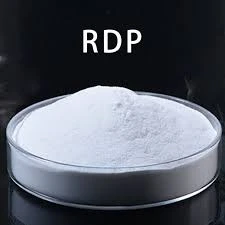
Dez . 11, 2024 10:07 Back to list
hydroxyethyl cellulose structure
Understanding the Structure of Hydroxyethyl Cellulose A Versatile Polymer
Hydroxyethyl cellulose (HEC) is a non-ionic, water-soluble cellulose ether that has garnered significant attention in various industries, including pharmaceuticals, cosmetics, construction, and food. Its unique properties make it a versatile additive, but to fully appreciate its applications, it is crucial to understand its structure.
Basic Structure
Hydroxyethyl cellulose is derived from natural cellulose, which is a polymer made up of repeating units of glucose. The transformation of cellulose into HEC involves the etherification process, where ethylene oxide is reacted with cellulose in an alkaline medium. This reaction introduces hydroxyethyl groups (-CH2CH2(OH)) into the cellulose structure, effectively changing its physical and chemical properties.
The introduction of hydroxyethyl groups enhances the solubility of cellulose in cold water, which is a notable difference from its parent cellulose. The structural modification occurs at the hydroxyl groups present in the cellulose molecule. Typically, the degree of substitution (DS) determines how many hydroxyl groups are replaced by hydroxyethyl groups. A higher DS leads to improved solubility and viscosity, making HEC a desirable component in various formulations.
Molecular Geometry
The structure of hydroxyethyl cellulose can be visualized as a long, flexible chain composed of repeating anhydroglucose units, where each unit can have multiple hydroxyethyl substituents. The resulting molecular geometry is not only linear but can also exhibit some level of branching due to the random substitution of hydroxyethyl groups. This branching plays a crucial role in the interaction of HEC with water and other components in a formulation.
hydroxyethyl cellulose structure

Properties Derived from Structure
The unique structure of hydroxyethyl cellulose is responsible for its myriad properties. Notably, it exhibits high viscosity, excellent film-forming capabilities, and good water retention. These traits make HEC an ideal thickener and stabilizer in various applications. In pharmaceuticals, for instance, HEC is often used as a binder in tablet formulations and as a suspending agent in liquids. Its ability to form gels is particularly beneficial in topical preparations, making it a prominent ingredient in creams and lotions.
Moreover, due to its non-ionic nature, HEC is less likely to interact with other charged molecules, allowing for the creation of stable emulsions and suspensions. This characteristic is especially valuable in the cosmetic and food industries, where maintaining product stability is paramount.
Environmental and Safety Considerations
From an environmental perspective, hydroxyethyl cellulose is derived from renewable resources, lending it a favorable ecological profile. Being biodegradable, HEC presents an advantage over synthetic polymers, which often persist in the environment and can lead to pollution issues. Additionally, HEC is generally recognized as safe (GRAS) by regulatory bodies, reinforcing its suitability for use in food and cosmetic applications.
Conclusion
In summary, hydroxyethyl cellulose is a versatile polymer that serves a broad range of applications due to its modified structure, which enhances its solubility, viscosity, and overall performance in various products. Understanding the structural aspects of HEC helps elucidate its physical properties and functional benefits, making it a valuable component in multiple industries. As research and technology continue to evolve, the potential for HEC in new applications and formulations remains vast, reinforcing its status as a crucial substance in modern manufacturing and product development. With an emphasis on sustainability and safety, hydroxyethyl cellulose is likely to play an even more significant role in the future.
-
Unlocking the Benefits of HPMC Products: A Gateway to Versatile Applications
NewsAug.07,2025
-
Unleashing the Potential of HPMC Ashland: A Comprehensive Look
NewsAug.07,2025
-
Tile Bonding Cellulose: The Key to Superior Adhesion and Durability
NewsAug.07,2025
-
Hydroxypropyl Methylcellulose Powder: The Versatile Component in Modern Pharmaceuticals
NewsAug.07,2025
-
Hydroxyethyl Cellulose: The Versatile Solution for Various Industries
NewsAug.07,2025
-
Hydroxyethyl Cellulose (HEC): The Versatile Polymer for Various Applications
NewsAug.07,2025







